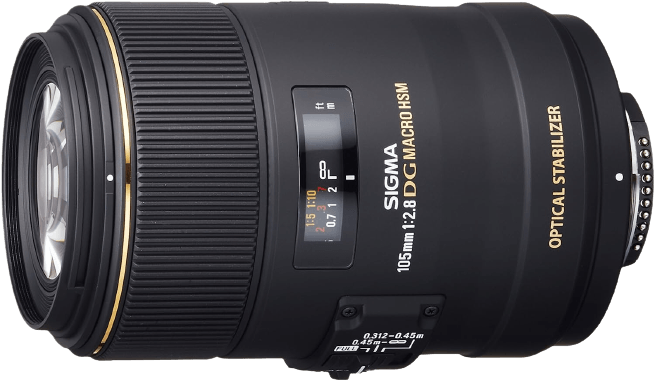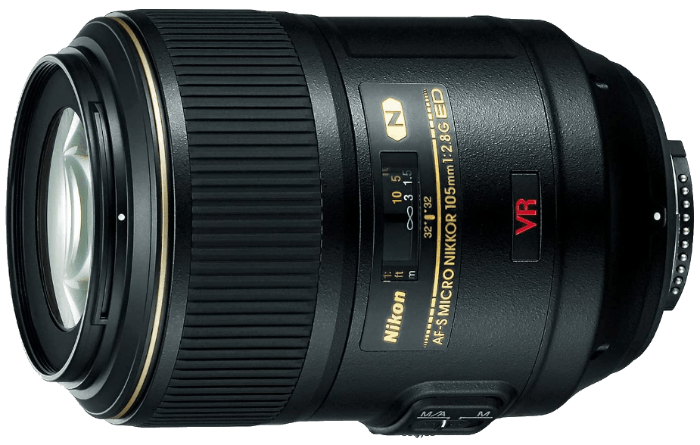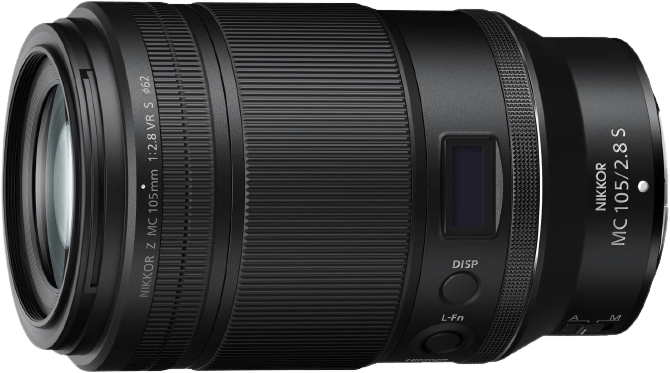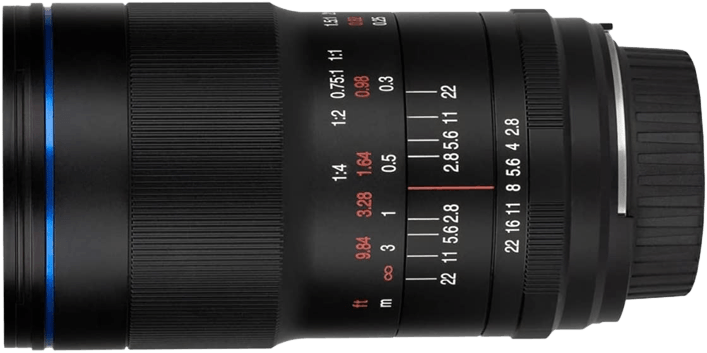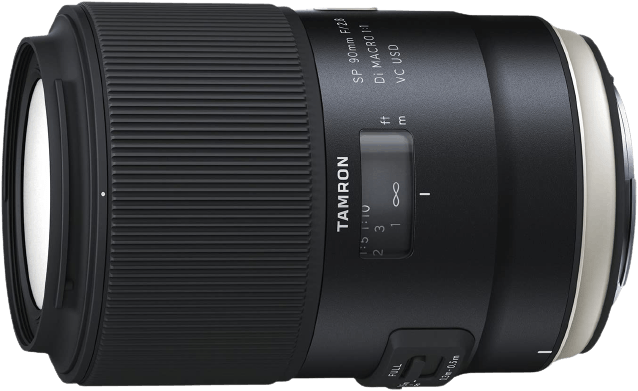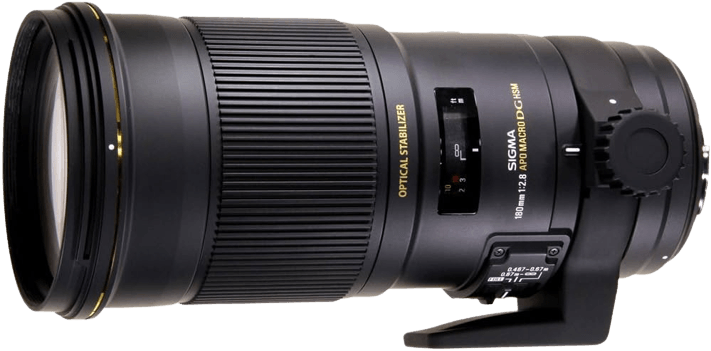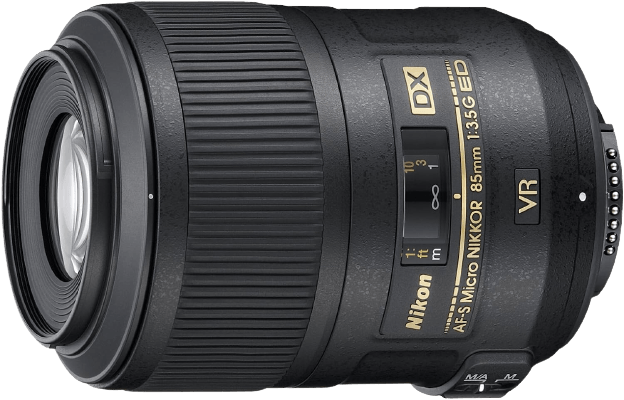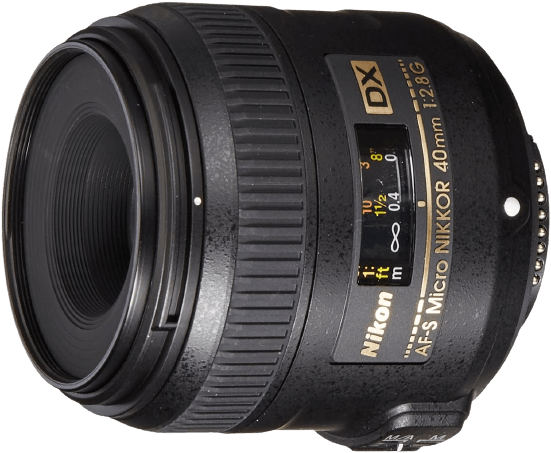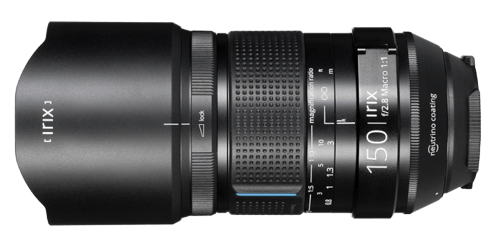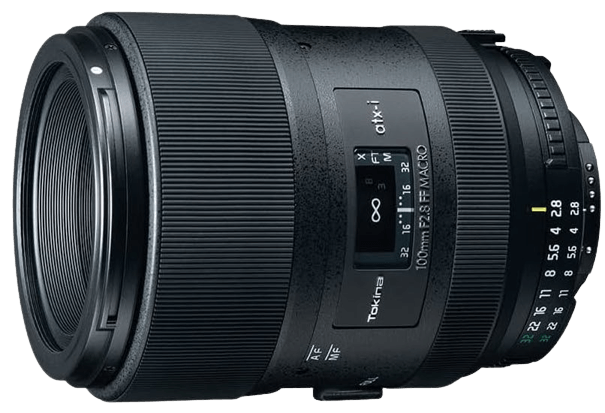As a wildlife photographer, I tend to shoot big animals like lions, gorillas, and elephants. But until recently, I did own a Nikon 105mm macro lens. And I experimented with flower and insect close-ups both abroad and in my back garden. After taking a range of factors into consideration, we have decided the Sigma 105mm f/2.8 is the best macro lens for Nikon cameras. Its great price and high-performance abilities solidify its place at the top of the list. The Sigma 105mm also functions amazingly as a short, fast telephoto lens! It excels in portraiture, wildlife, and sports photography. [Note: ExpertPhotography is supported by readers. Product links on ExpertPhotography are referral links. If you use one of these and buy something, we make a little money. Need more info? See how it all works here.]
10 Top 10 Macro Lens For Nikon Cameras.
Here’s our list of the best macro lenses for Nikon users. The Sigma 105mm f/2.8 is our top choice. The third-generation medium telephoto macro lens is an overhaul of the previous version. And the working distance of 14.6 cm (6.9″) is decent enough. It features internal focusing and an extra blade in the diaphragm to improve bokeh and reduce vignetting. And it has an Optical Stabilizer (OS) to facilitate handheld close-ups. The image quality is also improved. Special Low Dispersion (SLD) and High Refractive index (HR) glass corrects field curvature and chromatic and spherical aberration. At the same time, the Super Multi-Layer Coating improves contrast by reducing flare and ghosting. The floating inner focusing system moves two lens groups around independently to achieve internal focus. That means the lens stays the same length at all times. The Hyper Sonic Motor (HSM) makes sure that the autofocus system is fast, accurate, and quiet. However, there is still a full-time manual override. This was the macro and portrait lens I had in my camera bag until recently. The Nikon 105mm f/2.8. As well as offering a reasonable working distance, it comes packed with features. These include Internal Focusing (IF), second-generation Vibration Reduction (VR II) to help with handheld shooting, and a Silent Wave Motor (SWM) for fast and quiet autofocus (with full manual override). The lens also contains Extra-low Dispersion (ED) glass to minimize chromatic aberration, nano-crystal coating to improve contrast by reducing flare, and a 9-bladed diaphragm to improve bokeh. If you have a Nikon mirrorless camera, the Nikon Z MC 105mm is the standout choice for your camera! Nikon claims this 105mm is a master of the life-size shot. You will benefit from superb bokeh, flawless focusing, and steady handheld shooting. The lens is also part of Nikon’s S-Line mirrorless lenses. These groups of glass bring together new levels of depth and clarity to macro and close-up photography. The sharpness of the lens is one of its strong points. Nikon achieves this through is anti-reflective ARNEO and Nano Crystal coatings. The in-lens Vibration Reduction combines with in-camera VR for steady handheld shots even in low light. With the smooth and quiet AF, you won’t have to worry about using this camera for video work as well. The Laowa 100mm f/2.8 has an enormous “zoom” range for a macro lens, boasting a maximum of 2x magnification. The resolution and quality of the bokeh are excellent. It’s also an apochromatic (APO) lens. That means zero chromatic aberration in both in-focus or out-of-focus areas of the image. The lack of autofocus might be a problem for some. The short “focus throw” makes focusing a bit fiddly because even a slight turn of the focus ring will dramatically change the focus point. So, you might need a macro focusing rail. However, the two biggest problems are the short working distance and the fact that it’s an entirely manual lens. The Tamron 90mm f/2.8 upgrades the previous version and offers a working distance of 5.5″ at 1:1. It also provides excellent sharpness, electronic autofocus, internal focusing, weather sealing, and a Vibration Compensation (VC) system with XY-Shift compensation that dramatically reduces camera shake. It is powered by an Ultrasonic Silent Drive (USD), making autofocus a lot quieter. The Digitally Integrated (Di) design brings an improved coating, reducing reflections to a minimum in digital cameras. There is also a fluorine coating to prevent condensation and smudging. Like the Tokina 100mm lens, you can switch between manual and automatic focus by sliding the focus ring forward or back. The lens is also compatible with the TAP-in Console, which allows you to customize the autofocus and adjust other preferences. This is the world’s first 180mm macro lens. It offers a wide maximum aperture and a comfortable working distance. It also boasts a Hyper Sonic Motor (HSM) to ensure fast, accurate, and quiet focusing with full-time manual override. There’s also an Optical Stabilizer (OS) to minimize camera shake when shooting handheld. The “floating lens” internal focusing system and three “F” Low Dispersion (FLD) glass elements help eliminate color aberration. And the nine-blade diaphragm creates a beautifully smooth blur. The Nikon 85mm f/3.5 is another great macro lens for Nikon cameras. It features the second rendition of Nikon’s Vibration Reduction so you can shoot handheld images with confidence. You will also notice there is a wide focus ring on this lens. This makes manual focusing a breeze in any environment. You can pick up this lens for a great price, making it powerful and affordable. It is also extremely light. It won’t weigh you down throughout a long day of shooting. Do you want to get close to your subject but still need a wide-angle view? The Nikon 40mm f/2.8 is the macro lens for you. It allows you to get the standard 1:1 reproduction ratio needed for macro lenses while also providing a high level of sharpness and clarity. You may also want to choose this lens if you want a small and light macro lens for Nikon cameras. This lens comes in as the smallest and most lightweight lens on this list. The Irix 150mm f/2.8 macro lens is a bit of a mixed bag. It offers good bokeh and the working distance at 1:1 is longer than most other lenses. Plus, it eliminates vignetting, distortion, and color fringing in the background. But it’s a big, heavy lens without autofocus or optical stabilization. So it’s not ideal if you want to shoot handheld. The Tokina 100mm f/2.8 “flat-field” optical design means zero field-of-view curvature. That means images are sharp from edge to edge, and the multi-coatings improve contrast by eliminating flare and ghosting. In a neat feature, the One-touch Focus Clutch mechanism lets you switch between autofocus and manual focus by snapping the focus ring forward and back. However, the working distance at 1:1 of 4.5″ is a little too close for comfort. (ATX-I FF stands for Advanced Technology eXtra-Interactive Full-Frame.)
What to Look for in Macro Lenses
Macro photography creates the most beautiful images of the natural world with maximum convenience. However, most macro lenses’ sharpness and wide maximum apertures mean they’re also suited to portrait work—if you can find one that focuses fast enough! Here are eight factors to consider when choosing a macro lens:
Image quality Magnification (1:1 reproduction ratio or better) Working distance at 1:1 (i.e., the distance from the front of the lens to the subject, which is confusingly less than the minimum focusing distance, measured from the sensor plane) Maximum aperture (for low-light conditions) Smooth, circular bokeh Quiet autofocus Image stabilization (if you shoot handheld) Internal focusing
Picking Between Macro Lens Features
Unfortunately, some of these features conflict. So you’ll have to make a few trade-offs. For example, longer lenses allow you a greater working distance from your subject. That means you’re more likely to get smooth bokeh and less likely to frighten off any shy insects or block natural light—especially when using a lens hood or if your lens doesn’t have internal focusing. However, they tend to be heavier with a narrower maximum aperture. If you’re working handheld or in low light, that can be a pain. It’s also true that a shorter lens is fine if you have an APS-C sensor camera. That’s because it multiplies the effective focal length by the crop factor (1.5 in the case of the DX range of Nikon cameras).
Determining Your Personal Preferences
It also depends on your personal preferences. For instance, autofocus and stabilization are vital if you’re shooting handheld, but much less so if you’re a “serious” macro photographer using a tripod and strobes. In that case, you might be more interested in a lens that supports Nikon’s “focus shift” method of focus stacking. It allows you to take dozens or even hundreds of images at different focus settings. Then you can combine them later to get front-to-back sharpness in your subject. It’s also important to point out that third-party lenses often flatter to deceive, offering what looks like better specifications at a lower price than Nikon’s range of lenses. But they disappoint in terms of what matters, which is image quality.
Conclusion
To misquote the old saying, “Nobody ever got fired for buying Nikon.” In the same way that IBM was a byword for quality and reliability in the ’70s, Nikon lenses are known for macro photography. The same saying now seems to apply to Sigma lenses for Nikon cameras! The choice between the first two options is a tough one, so make sure you understand what you are looking for before purchasing. Remember that all macro photographers are unique and have their own ways of working. If you like shooting shy insects, you’re better off with a longer focal length macro lens. However, if you’re a “serious” macro shooter and always use a tripod and a strobe, you might consider sharpness far more critical than stabilization.
